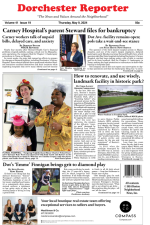December 1, 2016
Despite a strong economy and booming population growth, high costs of living and low rates of housing production in Greater Boston are disproportionately impacting those already living in poverty, according to a Boston Foundation report released Tuesday.
The 2016 “Greater Boston Housing Report Card” highlights an “alarming growth of housing insecurity and homelessness among families with children.” Coupled with soaring rents and stagnant wages, vulnerable populations are likely to continue feeling the brunt of the housing boom.
Areas like Dorchester, with higher proportions of voucher-dependent residents, can be caught in a shuffle, the report noted, as residents are moved between lower-income areas, perpetuating housing insecurity.
Permitting throughout the region is down, the Foundation says, with eastern Massachusetts expected to see a decrease of 18 percent in permits for new housing this year.
While this may mean that the luxury market is oversaturated, the impact concentrates on multi-unit buildings, the report said. The region is expected to see records in single-family home and condominium sales, despite a continued drop in homeownership rates. Greater Boston’s has dropped to 58.5 percent today, after averaging more than 64 percent from 2005 through 2013.
This building imbalance occurs as Suffolk County saw a nearly 8 percent population jump between 2010 and 2015, more than double the statewide rate. Greater Boston’s population is diversifying and aging as well as growing, the foundation report notes, now 75 percent white and with a median age of 38 years old. In 1990, the region was 88 percent white and had a median age of 33.4 years old.
The aging city and affordability issues for young adults is impacting the available housing stock, delaying home purchases “among cash-strapped, indebted Millennials, and possibly a decline in homeownership among seniors who may be selling their large homes and renting smaller apartments.”
Particularly dire, the report notes, is the increase in people living in poverty. While the official Boston poverty rate is 10.6 percent, the cost of living brings the adjusted poverty rate to 16.2 percent, accounting for about 163,00 residents.
Poverty cannot be allowed to continue to diminish the economic prospects of the most vulnerable people in our community,” wrote Boston Foundation President Paul Grogan.
Said state Sen. Linda Dorcena Forry, chair of the Legislature’s Joint Committee on Housing: “This housing shortage impacts people across all income levels, but especially those with the lowest income. Day by day, residents fall victim to homelessness, or are forced to make painful choices against ever-rising rents and necessities.”
At the Boston Foundation report presentation, Forry referenced the special senate committee’s report floating of 19 ideas on housing issues, including measures on foreclosures, avoiding displacement, and adjusting zoning.
Topics:



